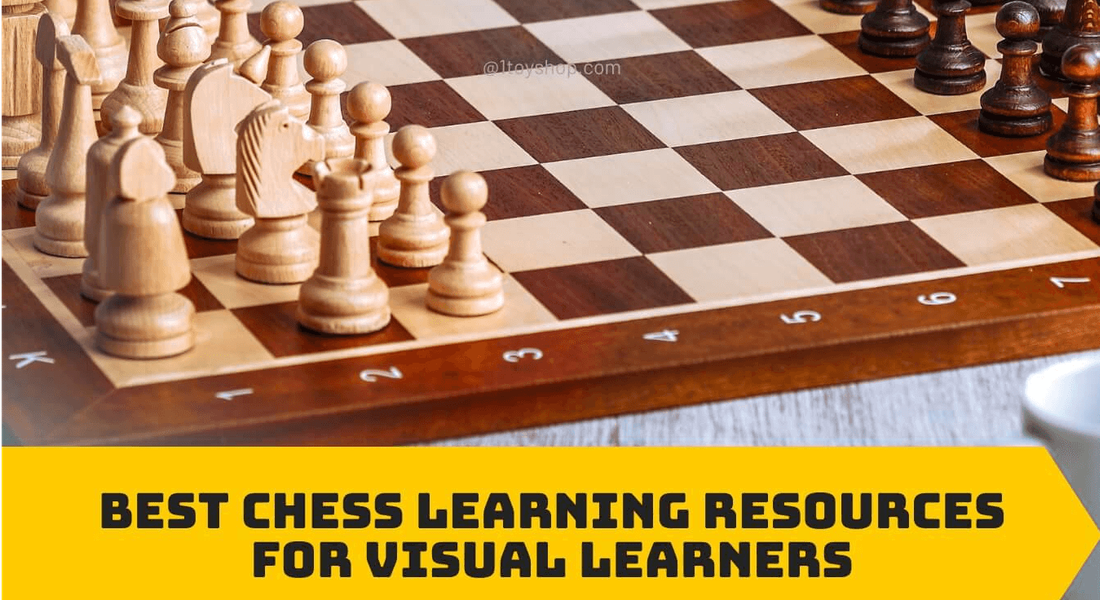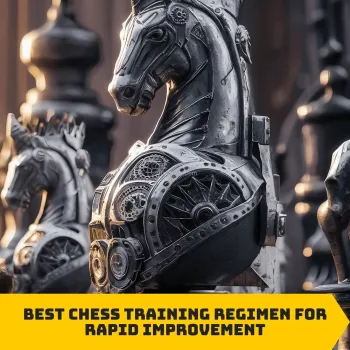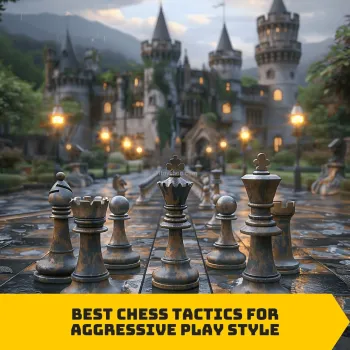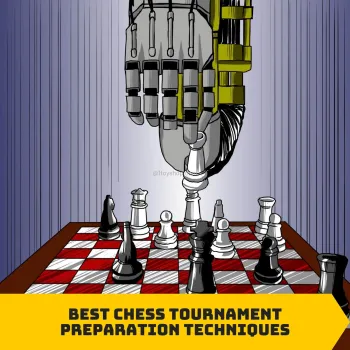Best Chess Learning Resources For Visual Learners
On
20/09/2024Reading time:
11 min
Summary:
Chess, the ancient game of strategy and skill, has captivated minds for centuries. For visual learners, mastering this complex game can be particularly rewarding when approached with the right resources.

To Get More Wonderful Toys And Take Discount Today. Click On The Image.
This article explores a variety of chess learning tools and methods specifically tailored to those who learn best through visual means. Whether you're a beginner or looking to enhance your skills, these resources will help you visualize chess concepts and improve your game.
The Power of Visual Learning in Chess
Visual learning is a powerful method for understanding chess. Many players find that seeing patterns, positions, and moves on the board helps them grasp concepts more quickly and retain information more effectively. Visual learners often excel in chess once they find resources that cater to their learning style.
Interactive Chess Platforms
Online Chess Websites
Chess.com
Lichess.org
Chess24.com
These platforms offer a range of visual learning tools, including:
Interactive puzzles
Video lessons with on-screen demonstrations
Analysis boards with move-by-move visuals
These features allow visual learners to see chess concepts in action, making it easier to understand and apply strategies.
Chess Apps for Mobile Devices
Several chess apps provide visual learning experiences:
Chess - Play & Learn
Magnus Trainer - Learn & Train Chess
Chess King Learn
These apps often include:
Animated tutorials
Visual puzzles with immediate feedback
Slow-motion replays of important moves
The portability of mobile apps allows visual learners to practice and learn on-the-go, reinforcing concepts through repeated visual exposure.
Video-Based Chess Resources
YouTube Channels
YouTube is a treasure trove for visual chess learners. Some recommended channels include:
ChessNetwork
St. Louis Chess Club
agadmator's Chess Channel
These channels offer:
Game analyses with visual board representations
Explanations of strategies using diagrams and animations
Historical game reviews with visual commentary
The combination of audio explanation and visual demonstration makes these channels particularly effective for visual learners.
Online Chess Courses
Several platforms offer structured video courses:
Chessable
Chess.com's video lessons
Internet Chess Club (ICC)
These courses often feature:
Professional instructors demonstrating concepts on virtual boards
Animated sequences of key positions and moves
Visual exercises to reinforce learning
The structured nature of these courses, combined with their visual focus, can significantly accelerate a visual learner's chess education.
Books and Magazines with Strong Visual Elements
While traditional chess books can be text-heavy, there are many resources designed with visual learners in mind:
Visually-Oriented Chess Books
"Zurich International Chess Tournament, 1953" by David Bronstein
"The Life and Games of Mikhail Tal" by Mikhail Tal
"Silman's Complete Endgame Course" by Jeremy Silman
These books feature:
Numerous diagrams and illustrations
Step-by-step visual explanations of moves and strategies
Color-coded sections for easy reference
Chess Magazines
New In Chess
Chess Life
These publications often include:
High-quality photographs of chess positions
Infographics explaining chess concepts
Visually annotated game analyses
The combination of text and rich visual content in these resources caters well to visual learners, providing a balanced approach to chess education.
Software and Tools for Visual Chess Analysis
Chess Analysis Software
Stockfish (with a GUI like Lucas Chess)
ChessBase
SCID (Shane's Chess Information Database)
These tools offer:
Visual representation of chess engine analysis
Heat maps showing the strength of piece positions
Arrow overlays to indicate potential moves and threats
Using these tools, visual learners can see the flow of a game and understand complex positional concepts more easily.
Online Chess Visualization Trainers
Websites dedicated to improving chess visualization:
Chess Tempo's Vision Trainer
Apronus Chess Visualization Trainer
These trainers help develop:
Board visualization skills
Pattern recognition abilities
Mental mapping of chess positions
Regular use of these trainers can significantly enhance a visual learner's ability to "see" the board and anticipate moves.
Conclusion
For visual learners, the world of chess offers a wealth of resources tailored to their learning style. From interactive online platforms and mobile apps to video-based content and visually-rich books, there are numerous ways to engage with and master the game of chess. By leveraging these visual learning resources, players can enhance their understanding of chess concepts, improve their strategic thinking, and ultimately elevate their game to new heights.
Remember, the key to improvement lies not just in accessing these resources, but in consistent practice and application of the concepts learned. Whether you're just starting out or looking to refine your skills, these visual chess learning tools provide an excellent foundation for growth and mastery in the fascinating world of chess.
Source: Team 1ToyShop (1.T.S) compiled, analyzed and wrote.

Best Chess Training Regimen For Rapid Improvement
Author name
24.07.2024
Mastering the Game: The Ultimate Chess Training Regimen for Rapid Improvement

Best Chess Tactics For Aggressive Play Style
Author name
24.07.2024
Mastering Aggressive Chess Tactics: A Guide to Dominating the Board

Best Chess Tournament Preparation Techniques
Author name
23.07.2024
Winning Strategies: Preparing for Chess Tournaments Like a Pro
